 |
This clock looks like a Vienna Regulator, but it was factory made by Gustav Becker in Freiburg, next to the Black Forest in Southern Germany. The introduction of factory methods of clock production increased the quantities produced and lowered the prices dramatically. It is my understanding that a Gustav Becker clock originally cost only one tenth the price to produce, compared to a comparable hand-made regulator clock from Vienna. The name brand of Gustav Becker has excellent recognition, making these clocks highly collectible.
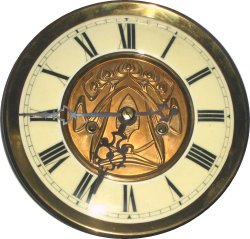 |
Fig. 1
This example is probably from the late 1880s. You can see that, compared to the Vienna Regulator shown on the previous page, the levers are larger and heavier. The following photos were taken during disassembly.
 |
Fig. 2
Taking this clock apart is straightforward, as it has the conventional design for the rack and snail.
 |
Fig. 3
One issue I have with Vienna Regulator clocks, and you can see it on this clock, is that the pallet assembly has the beat adjustment mounted to it, adding a lot of unnecessary weight. The pallet assembly should be as light as possible. The beat adjustment could be mounted on the pendulum itself, which is sometimes seen on other types of clocks.
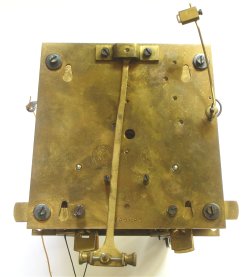 |
Fig. 4
Outstanding quality, for a fraction of the cost, is what earned Gustav Becker a gold medal, earned at the 1852 Silesia Trade Exposition.
 |
Fig. 5
The pallet assembly has a Vuliamy escapement, which is a Graham escapement with adjustable pallets. This feature would help considerably in lowering the cost of production.
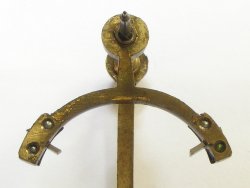 |
Fig. 6
Each pallet has two screws to hold it in place. The only disadvantage here is that the design adds weight to the pallet assembly, so more weight will be required to keep this clock running.
 |
Fig. 7
Unable to survive the Great Depression, Gustav Becker was taken over by Uhrenfabrik Junghans in 1935.
1850 480
1860 4,000
1863 10,000
1865 15,000
1867 25,000
1872 50,000
1875 100,000
1880 260,000
1885 500,000
1890 800,000
1892 1,000,000
1900 1,500,000
1913 1,850,000
1923 1,860,000
1925 1,945,399
1926 2,244,868
 |
For comparison, here is a Lenzkirsch from the 1880s. It has been more than ten years since I last saw a Lenzkirsch, so these clocks are quite rare. Everything about the mechanism is comparable in hand-finished quality to a Japy or a Vincenti, and does not reflect the mass-production technology found in Gustav Becker clocks. Other differences lie in the shape of the plates, since fine French clocks usually have round plates, and in the escapement. This clock has a Vuliamy escapement, like the Gustav Becker above.
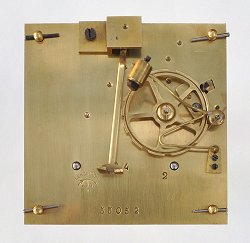 |
 |
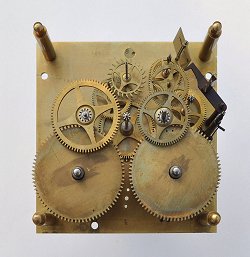 |
 |
Clock Repair Main Page
Escapements in Motion
Links Page